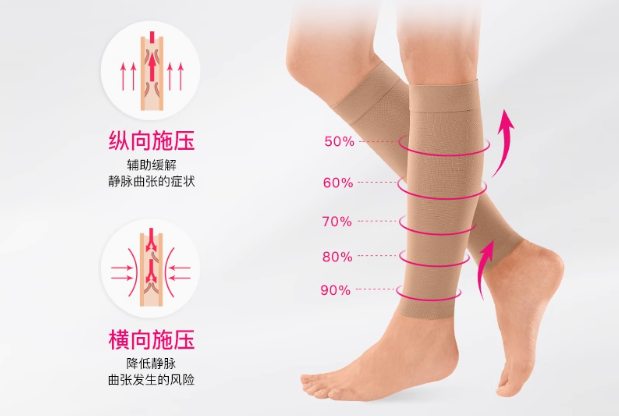Finding the right manufacturing partner can feel overwhelming. You need quality and reliability, but face a sea of options. I can help you find a partner who builds your brand.
To choose a reliable sock manufacturer, look beyond the price. Focus on their communication, quality control systems, material expertise, and willingness to understand your brand's vision. A true partner acts as an extension of your team, ensuring consistent quality and transparent processes.

Finding that perfect partner seems hard, but it doesn't have to be. It all starts with asking the right questions and knowing what to look for. Over my years running Yuson Textile, I’ve seen many entrepreneurs and buyers like you navigate this process. Let's break down exactly what you need to do, one step at a time. This journey is crucial for building a successful brand from the ground up.
How do I find a manufacturer for socks?
The internet is full of supplier lists, which makes it hard to know who to trust. You need a real factory, not just a middleman. Here are the proven ways to find them.
You can find sock manufacturers through online B2B platforms like Alibaba, by attending industry trade shows, or by getting referrals from your network. For the best results, use a combination of these methods to find and verify potential partners.
Finding the right place to look is your first big step. Each channel has its own good and bad points. I started Yuson Textile by connecting with clients directly, and I believe that personal connection is still very important today.
Online B2B Platforms
Sites like Alibaba or Made-in-China are a common starting point. They give you access to thousands of suppliers instantly. But you must be very careful. Many listings are from trading companies, not actual factories. Look for suppliers with many years of history, good reviews, and verified credentials. Don't just trust a "Gold Supplier" badge. Ask for their business license and any factory audit reports they have, like BSCI or OEKO-TEX. A transparent, real factory will be happy to share these with you.
Industry Trade Shows
If you can, I always recommend attending a trade show. Meeting a potential partner in person builds trust much faster than emails. You can touch the products, see the quality firsthand, and have a real conversation with the people who will be making your socks. It also shows the manufacturer that you are a serious buyer. This is how I’ve met some of my best long-term partners.
| Method | Pros | Cons | My Advice |
|---|---|---|---|
| Online Platforms | Large selection, easy to search | Many middlemen, hard to verify | Use for initial research, then verify everything. |
| Trade Shows | Meet factory owners, see product quality | Can be expensive and time-consuming | Best for serious buyers building a relationship. |
| Referrals | High level of trust, pre-vetted | Limited options, may not fit your niche | Always your first choice if you can get one. |
How can you tell good quality socks?
Every sock looks good in a product photo. But cheap socks can quickly fade, shrink, or get holes, which hurts your brand's reputation. Let me show you what to look for.
Good quality socks are defined by the material, stitch density, and finishing details. Check for soft yet durable yarns like combed cotton, a higher needle count for a denser feel, and a seamless toe closure for maximum comfort.
Quality is in the details you cannot see in a picture. When I started my factory, I made a promise to myself that I would never compromise on quality. When you get a sample sock from a potential supplier, you need to do more than just look at it. You need to inspect it carefully.
Material Matters
The yarn is the soul of the sock. Regular cotton is cheap, but combed cotton is much softer and stronger because the short, breakable fibers have been removed. This makes the sock last longer and feel better. For athletic socks, a blend with materials like nylon and spandex is very important. It gives the sock stretch and helps it keep its shape after washing. You should tell your manufacturer exactly what kind of feel and performance you need.
Construction is Key
Look at the sock very closely. The "needle count" tells you how dense the sock is. A 200-needle sock is denser and can show more detailed patterns than a 144-needle sock. Also, check the seam at the toe. A hand-linked or "seamless" toe is flat and much more comfortable than a bulky seam. Rub the heel and toe areas. They should feel thicker and stronger if they are reinforced.
| Material | Best For | Key Benefit |
|---|---|---|
| Combed Cotton | Everyday & Fashion Socks | Softness, durability, and breathability |
| Merino Wool | Outdoor & Winter Socks | Regulates temperature, wicks moisture |
| Nylon/Spandex | Athletic & Performance Socks | Stretch, strength, and shape retention |
How do I create my own sock brand?
You have a great idea for a sock brand. But the journey from a design file to a physical product can seem very complicated. Let's simplify the process into clear, manageable steps.
Start with a clear brand identity and target customer. Then, create your designs and detailed tech packs. Find a manufacturer to produce samples for approval. After you approve, move to bulk production and plan your launch.
Creating a brand is about more than just making a product. It is about telling a story that connects with people. I love working with brand founders because their passion inspires me. Here is how we help bring that passion to life, step by step.
From Idea to Tech Pack
First, you need a clear plan. Who are your customers? What makes your brand special? Once you know this, you can create a "tech pack." This is the blueprint for your sock. It must include your design file, material information, size chart, and Pantone color codes. The more detailed your tech pack is, the faster and more accurate your first sample will be. A good manufacturing partner will review your tech pack and may even suggest small changes based on their production experience to make the sock even better.
The Sampling Process
This is where your idea becomes a real product you can hold. We will take your tech pack and create a physical sample. You will receive it, try it on, wash it, and give us your feedback. Maybe the color is a little different than you expected, or the fit isn't quite right. This is a normal part of the process. We will then adjust the sock and make a new sample. We repeat this until you are 100% happy and confident in the product.
Bulk Production and Branding
Once you approve the final sample, we are ready for the bulk production order. At the same time, we should also finalize your packaging. Custom labels, tags, or boxes are part of your brand's identity. Many factories, including us at Yuson, can help you source these packaging items. This ensures everything is ready at the same time for a professional launch.
How much does it cost to manufacture socks?
Budgeting is a critical part of your business plan. But getting a clear price for custom socks can be difficult because many factors influence the cost. Let me explain what these factors are.
The cost to manufacture socks usually ranges from under $1 to several dollars per pair. The final price depends on the yarn material, design complexity, order quantity (MOQ), and custom packaging requirements.
The question I get asked most often is about price. My advice is always the same: the cheapest price is almost never the best value. A reliable partner will be transparent about their pricing and explain the costs. Here are the main things that determine the price.
Material and Design Complexity
The biggest cost factor is the yarn you choose. Specialty yarns like merino wool, organic cotton, or recycled fibers will cost more than standard combed cotton. The design also plays a big role. A sock with a complex, six-color knitted pattern is more expensive to make than a simple two-color striped sock. This is because complex designs require more machine setup time and the machines have to run slower to create the pattern accurately.
Minimum Order Quantity (MOQ)
Every production run has fixed costs1 for setting up the machines. When you place a large order, these setup costs2 are spread across thousands of pairs, which lowers the price per pair. For small orders, the price per pair is higher because those same setup costs are spread across fewer units. Most factories have a Minimum Order Quantity3, or MOQ. Our standard MOQ is around 500 to 1000 pairs per design and color. Be careful with factories that offer a very low MOQ, as they may be a middleman or might be sacrificing quality.
| Cost Factor | High-Cost Example | Low-Cost Example |
|---|---|---|
| Material | Merino Wool Blend | Standard Cotton |
| Design | 6-Color Jacquard Pattern | 2-Color Stripes |
| Quantity | 500 Pairs | 10,000 Pairs |
| Packaging | Custom Printed Box | Simple Paper Band |
Conclusion
Choosing a manufacturer is really about finding a long-term partner. Focus on clear communication, proven quality, and a shared vision. A good partner will help your brand grow and succeed.
-
Fixed costs are essential for budgeting in manufacturing. Learn how they influence overall production expenses and pricing. ↩
-
Setup costs play a vital role in pricing strategies. Discover how they impact your production costs and pricing decisions. ↩
-
Understanding MOQ is crucial for cost management and ensuring quality in production. Explore this link to learn more about its significance. ↩





